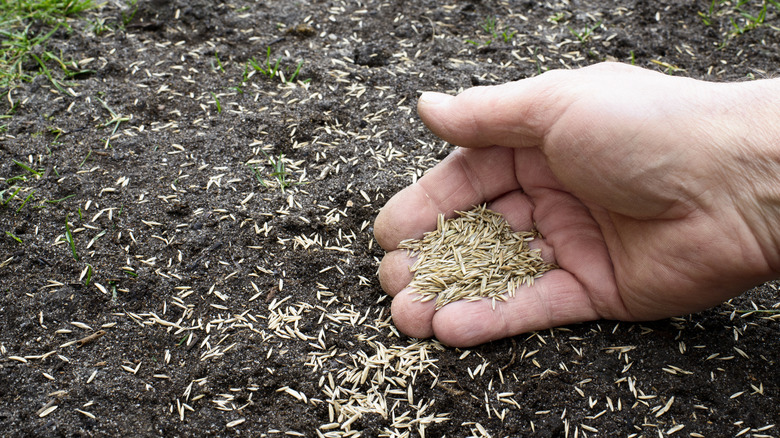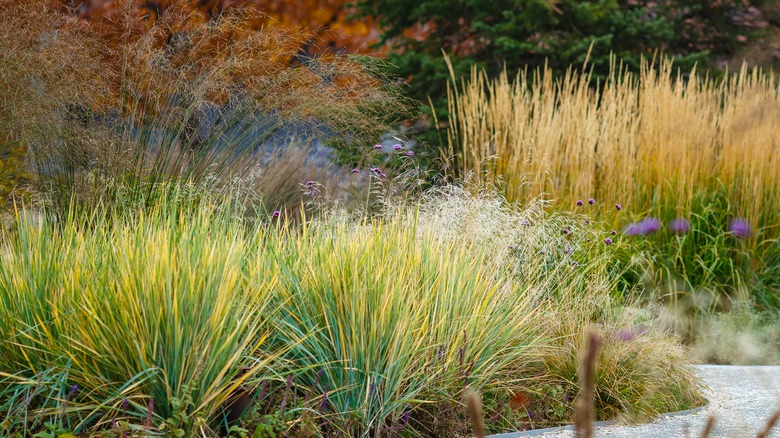The Low-Maintenance Grass Option That's Also Drought Resistant
Getting a perfect lawn is incredibly challenging and can be a costly ordeal — in fact, many Americans pay a steep price for their lawn care program. Some grasses are higher maintenance than others, which is fine if you live in a climate that supports your yard's needs. If you live in a drought-ridden area of the country, however, it may be too big of an ask (and too high an expense) to expect a lush turf of well-hydrated blades. If you are hoping to minimize the amount of time, effort, and money required to keep your property looking great, one of the best changes to make may be the type of grass that makes up your lawn.
One popular — albeit somewhat obscure — type of grass is Blue Grama. Thanks to its beautiful appearance and surprisingly low watering demands (it requires only about 7 inches of water a year to thrive), this lesser-known grass is an excellent option for property owners who live in regions that are susceptible to drought.
Who should consider Blue Grama
A drought-susceptible grass that is also low maintenance? Those characteristics will have already sent most individuals running to their nearest plant nursery, but if you need a little more convincing, there is even more to love about this species. While this grass naturally has a somewhat wild appearance when allowed to grow without limitations, it works beautifully as turf when mowed to 2 inches regularly. Individuals who have children and animals in the home would do well to consider Blue Grama, given that it has no serious or known insect or disease issues (although it can deal with the occasional aphid), so it should not require pesticide sprays.
Thanks to its resilience, Blue Grama can withstand a variety of soil types, so long as they are not poorly-drained and wet. This water-conscious grass loves the full sun and will not be as easily scorched as other delicate grass types (aim for 4-6 hours of direct sunlight every day). For individuals who like to know the precise needs of their grass, Blue Grama will best grow in soil that has a pH of 6.6-8.4. It will self-seed in the garden if left to its own devices, which can be a big win for the laissez faire gardener, although it may require overseeding periodically should you notice its growth pattern beginning to be too patchy.
More stats on Blue Grama
Technically speaking, Blue Grama is a prairie grass that is native to the southern and western portions of North America, including Mexico. It is suitable for zones 3-10, which covers the entire continental United States. Found throughout the Great Plains, it presents as a ground-covering plant that livestock can feed on. There are distinct advantages to this ornamental grass in landscaping, such as its provision of a natural habitat for animals and natural protection against ground erosion. When allowed to grow to full height, which can reach 2 feet, it has a wispy appearance and puts out elongated, reddish-purple seed heads, which are a favorite food of birds and other small mammals.
As a warm-season grass, its color changes throughout the year, ranging from a dusty green in the summer to brown and burnt orange in the fall, giving it an interesting and ever-evolving aesthetic. This grass is also unflinching in the face of air pollution. If you're looking for a hardy lawn that hardly needs maintenance, Blue Grama could be the perfect match.


